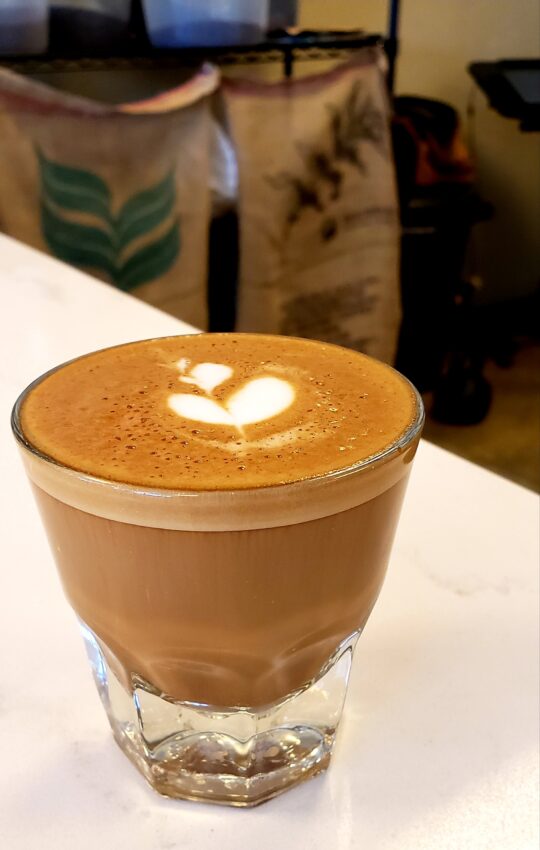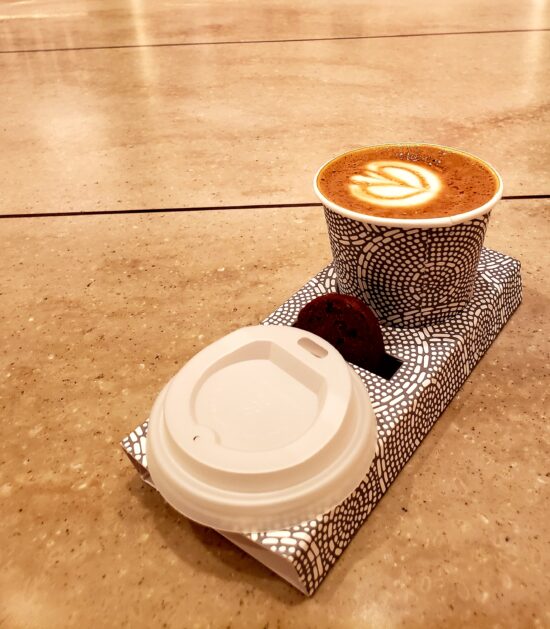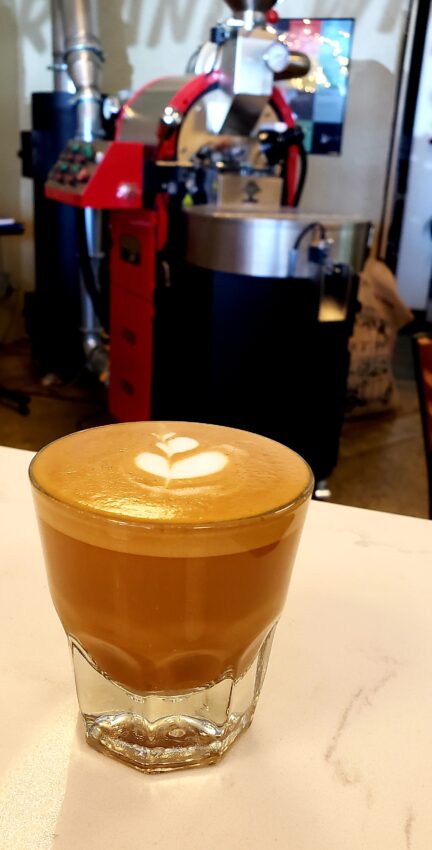
We take a look at the history and popularity of the diminutive cortado.
BY EDDIE P. GOMEZ
SPECIAL TO BARISTA MAGAZINE
Photos by Eddie Gomez
Cortados are everywhere on specialty-coffee menus today, but that hasn’t always been the case. Before we can look at why the cortado is an especially misunderstood drink, let’s talk about what makes a cortado a cortado. The strong but small-sized drink is basically a flavorful combination of equal parts espresso and milk, usually in a serving of about 4 ounces. The milk is slightly steamed but not to the point where much texture is created. The all-important ratio of espresso-to-milk and the balance of flavors it produces also happens to be one of the reasons a legion of fans call the drink their favorite.

The Balance of Sweetness
The proportion of espresso to milk in a cortado plays a major role in the drink’s appeal. Cortado fans enjoy the boldness of espresso, but they especially appreciate the balanced sweetness that milk adds to the drink. The typical 4-ounce size reminds us that the small drink packs a strong punch. Milk helps to balance out espresso’s naturally high acidity and bitterness, which may be a bit too strong on its own for some coffee lovers
I wanted to know more about the espresso-to-milk ratio of a cortado, so I reached out to Aaron Duckworth, a coffee professional who designs seasonal beverages for Parisi Coffee in Kansas City, Mo. He mentions that “for people who like espresso-forward drinks, the cortado retains unique or outstanding flavor notes that are accentuated by the sweetness of milk without being diluted by it. For example, the aromatic fruit bomb of an Ethiopian espresso will still be there. It will only be slightly sweetened by milk.” The cortado ends up being a great choice for people who enjoy the bold flavor of espresso because the lactose in the milk provides just enough sweetness for a balanced taste combination without having to add any sugary ingredients.

A Bit of History
The cortado originates from Spain’s Basque region and is named for the Spanish verb “cortar,” which means to cut. It is easy enough to understand that the milk figuratively cuts down the bitter taste of espresso. When a cortado is made correctly, the espresso’s bold taste is diffused but not diminished by the addition of equal parts milk. Initially, the cortado’s popularity spread throughout the Iberian Peninsula, from Galicia to Portugal, and then to Latin American countries. By the end of the 20th century, cortados were being served throughout the world.
In a New York Times Magazine article from 2010, writer Oliver Strand details the rise in popularity of the cortado. He traces the cortado’s origins in the United States to a Blue Bottle Coffee employee in San Francisco. According to to Strand, “Steve Ford … formulated a cortado-like drink and named it after the glass in which it was served, the 4 1/2-ounce Gibraltar, manufactured by Libbey.” In detailing the cortado’s first appearance in Manhattan and the subsequent interest in the trendy drink, Strand says, “The Gibraltar came to New York when Ford logged a few shifts at Cafe Grumpy.” Another origin story in the article has one of Ford’s former co-workers at Blue Bottle Coffee taking the cortado recipe to the café Abraco, also in Manhattan. Whatever the case may be, the cortado is well into its third decade of gracing café menus around the world.
Cortado or Gibraltar?
Another reason that cortados are misunderstood has to do with the simple fact that they are called by different names in different places. As the popularity of cortados spread from region to region, the drink sometimes took on new names. For example, in Australia, a cortado-like drink is called a piccolo, and in Cuba it’s called a cortadito, the diminutive form of the word cortado. In France a drink closely resembling a cortado is called a noisette. And, of course, in the United States the name cortado and Gibraltar seem to be interchangeable.

Size Is Everything
One rule in the cortado universe is pretty much set in stone, whether you call it a Gibraltar, a piccolo, or a noisette: The size does not change. The standard 4 ounces of liquid volume is not going to change any time soon. There are no mini or large versions of a cortado. Simple, right? Baristas the world over, however, have been frustrated by customers who request larger versions of a cortado simply because they are used to giant lattes and cappuccinos. The problem with grouping a cortado with the Italian espresso cuisine drinks is that consumers assume they can ask for a larger size without realizing that a larger size means it’s no longer a cortado.
Ruben Pablo, a well-known Las Vegas-area barista who works at Bungalow Coffee, recently offered an explanation on why a cortado should never be more than the traditional 4 ounces. He mentions, “A double shot of espresso is roughly 2 ounces, so an equal amount of milk puts you at 4 ounces—just the right size to bring out the best of the combination. When people want a larger version they disrupt this balance, and the easiest way to get to a larger drink is to add more milk, and then they’re better off ordering a latte or cappuccino.”
The Role of Milk
It is important to note that a cortado is not meant to have a thick layer of foamed milk on top of it like a latte or cappuccino. The primary purpose of the milk in a cortado is to create a flavorful balance of sweetness when combined in equal parts with the espresso. The milk should only be steamed long enough to come to temperature, but not stretched to the point where texture alters the experience of enjoying the simplicity of two ingredients.
In other words, having a thick layer of near-chewable foam belongs to another class of espresso-based drinks, but not the cortado. There just isn’t enough room in a Gibraltar glass to accommodate a third dimension created by adding a head of textured milk. The cortado keeps it simple that way, but baristas often decorate them with simple latte art designs, which makes them fun to look at, miniature versions of their bigger, Italian cousins.
The Timing
Another aspect of cortados that is easily misunderstood surrounds the amount of time it takes to consume one. Yes, there is a certain timeliness to the art of enjoying cortado. It’s not a shot of whiskey, so there’s no throwing back one’s head and tossing it down the chute in one quick motion. There is also not enough volume in the drink to sit back and watch the world go by while consuming it. That is a luxury that comes with bigger drinks such as lattes and cappuccinos. The balance in terms of timing lies somewhere in the middle of these two extremes—perhaps a sip, and then another, and then a quick finish.
If you are a huge fan of the cortado, you probably already understand its defining features and the need to keep things simple. The rest of us will learn to indulge its finer points without wanting to change anything about its perfectly simple recipe.
ABOUT THE AUTHOR
Eddie P. Gomez (he/him) is a freelance writer based in Modesto, Calif. When he is not substitute teaching kindergarten classes, he wanders from city to city, perfecting the art of the food and coffee adventure.


